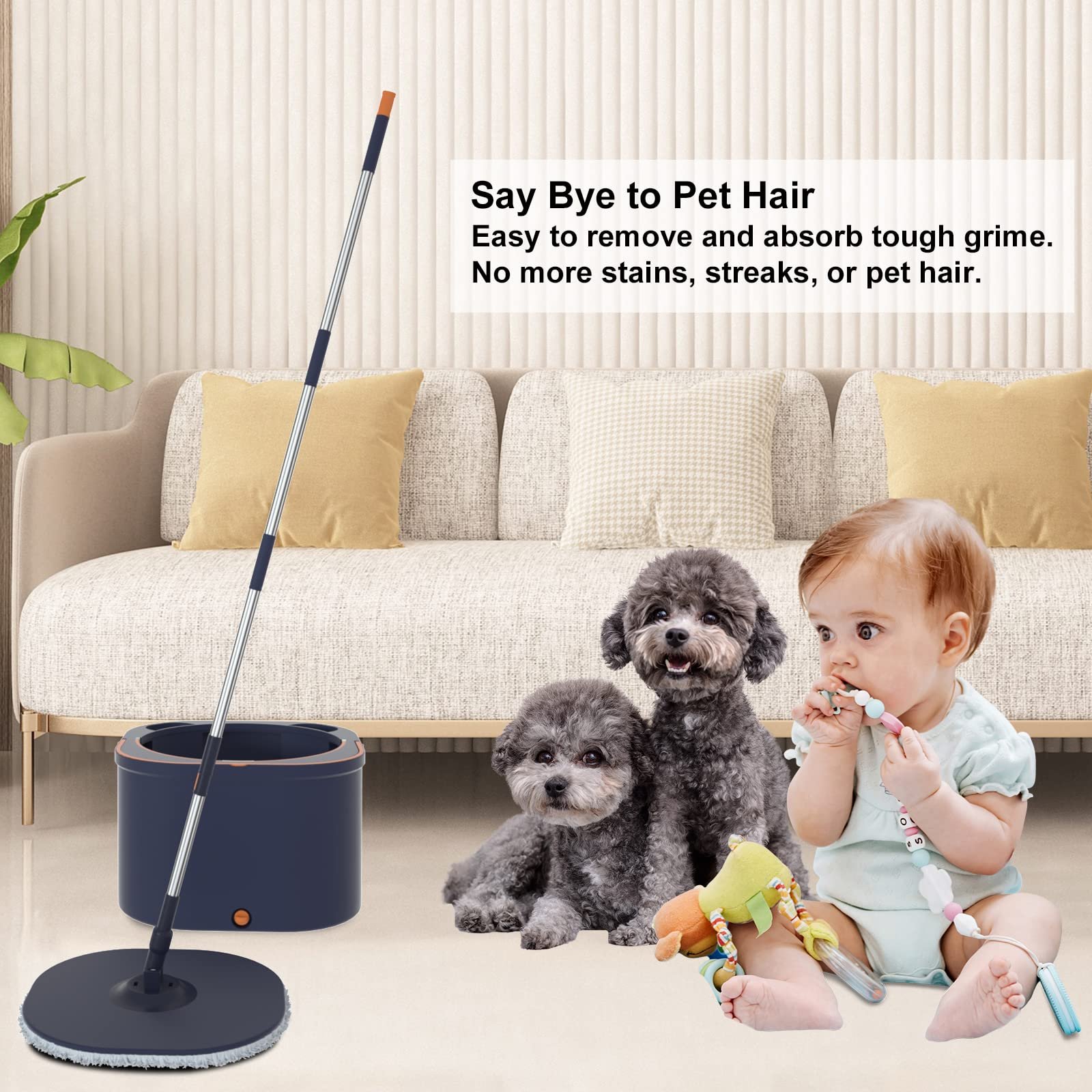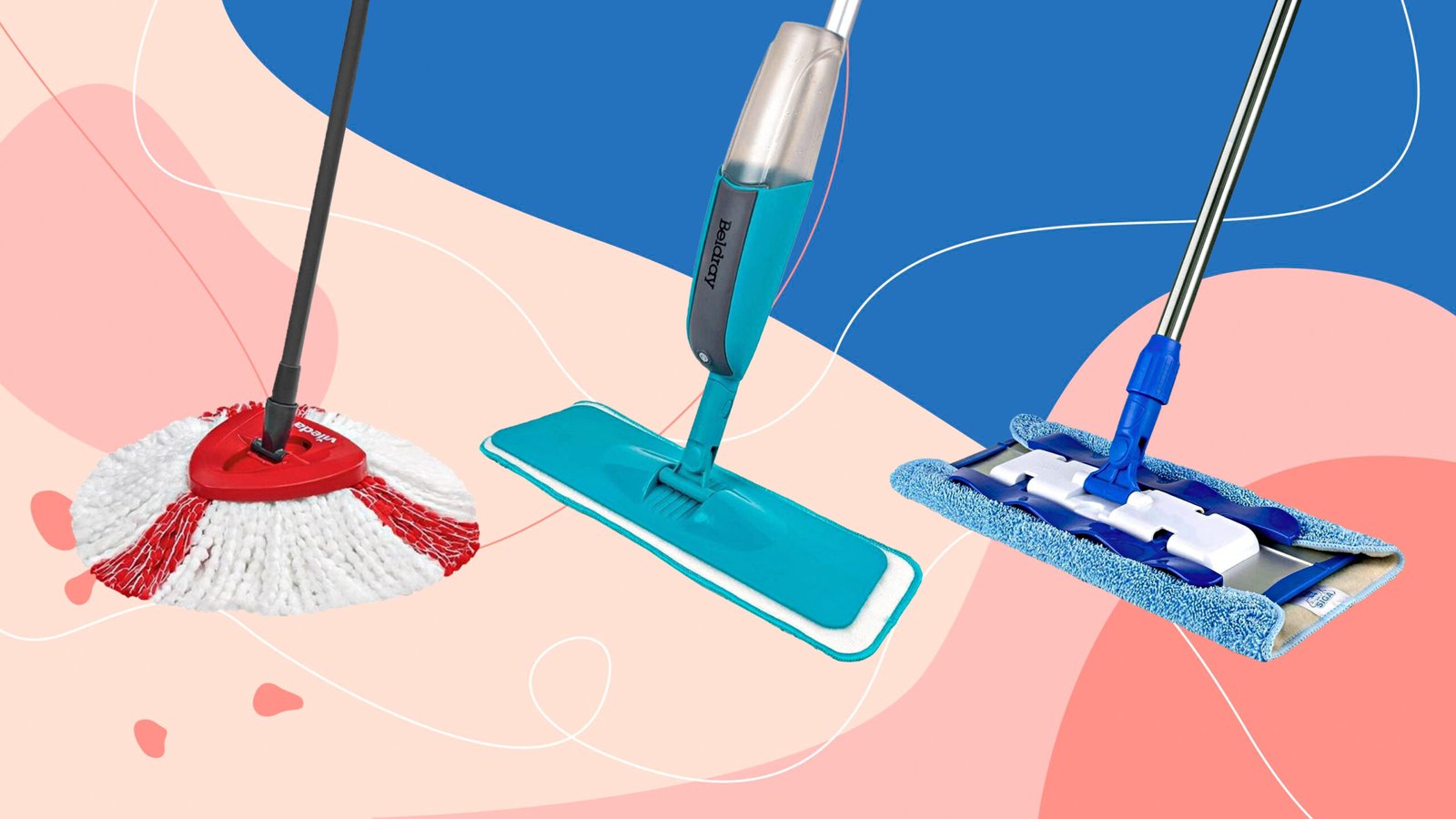Introduction to Spin Mops and Their Popularity
In recent years, spin mops have surged in popularity, emerging as a favored cleaning tool in many households. Capitalizing on promises of enhanced convenience, these mops have been marketed as a superior alternative to traditional mopping systems. The allure lies in their design and functionality, which ostensibly offer greater ease of use and efficiency.
At its core, a spin mop consists of a mop head attached to a handle, often with a built-in mechanism that allows for spinning the mop head to wring out excess water. This design is supplemented by a bucket, typically equipped with a spinning basket, where the mop head can be placed and spun to remove dirt and moisture. The intent is to minimize the physical effort required, reducing the need for manual wringing and making the cleaning process more streamlined.
The marketing narrative around spin mops emphasizes their ergonomic advantages, suggesting that they are a time-saving and user-friendly solution for maintaining clean floors. Advertisements frequently highlight the ease with which the mop head can be rinsed and wrung out, purportedly ensuring that users can mop without bending over or getting their hands wet. Additionally, the circular and often microfiber mop heads are touted for their ability to cover more surface area and effectively capture dust and grime.
However, despite these appealing attributes and the growing adoption of spin mops, it is crucial to scrutinize whether they truly live up to the hype. Are spin mops the ultimate cleaning tool they are made out to be, or do they have inherent drawbacks that might make them less suitable for certain households? This blog post delves into the potential limitations and challenges associated with spin mops, offering a balanced perspective to aid consumers in making informed decisions about their cleaning tools.
Durability and Longevity Concerns
When evaluating the durability and longevity of spin mops, it’s important to consider the construction and materials typically used. Many spin mops are made from plastic components, which can be prone to wear and tear over time. The spinning mechanism, often a critical feature, can be particularly vulnerable. Frequent spinning can lead to the degradation of internal gears, resulting in reduced efficiency or complete failure of the mechanism. This is a significant drawback, especially when compared to the simpler construction of traditional mops, which tend to have fewer moving parts and thus fewer opportunities for malfunction.
User reviews and expert opinions often highlight these issues. Common complaints include the spinning mechanism breaking down after a few months of regular use and the mop head becoming less effective over time. For example, the plastic components may crack under pressure or the handle may become loose, making the mop difficult to use. Replacement parts, while available, can add to the overall maintenance cost, making spin mops a less economical choice in the long run.
Another aspect to consider is the cost of replacements. Spin mops often require specific replacement heads that can be more expensive than the more generic options available for traditional mops. This ongoing cost can accumulate over time, making spin mops a less cost-effective solution. Additionally, the need for specialized parts can lead to availability issues, causing delays and inconvenience.
Comparatively, traditional mops generally offer better longevity. Their simple design and robust materials make them more resilient to wear and tear. Even though they may not offer the same level of convenience as spin mops, their durability often translates to a longer lifespan and fewer replacement costs. In essence, while spin mops may offer innovative features, their long-term durability and associated costs might make them a less attractive option for some households.
Hygiene and Cleaning Effectiveness
When it comes to maintaining a clean and hygienic home, the choice of cleaning tools is paramount. Spin mops, while popular for their ease of use and convenience, may not always excel in terms of cleaning effectiveness and hygiene. One primary concern is their ability to clean various types of floors and handle different kinds of dirt and stains. Spin mops, with their rotating mechanism, often fail to exert the necessary pressure to remove stubborn grime, especially on textured surfaces like tile or stone. This can result in an uneven clean, leaving some areas inadequately sanitized.
Furthermore, the hygiene aspect of spin mops warrants scrutiny. The design of the mop head and the spinning mechanism, while effective at wringing out water, may not be as efficient in removing dirt and bacteria from the mop fibers themselves. After mopping, residual contaminants can remain trapped within the mop head, which can become a breeding ground for bacteria if not properly cleaned and sanitized. This is a notable drawback, as a mop that cannot be thoroughly cleaned compromises the overall hygiene of the cleaning process.
Contrastingly, other mop types, such as microfiber flat mops or steam mops, often provide superior cleaning and hygiene benefits. Microfiber mops, for instance, are known for their ability to trap and hold dirt, dust, and bacteria effectively within their fibers. They can be easily machine-washed at high temperatures, ensuring that they are thoroughly sanitized after each use. Steam mops, on the other hand, use high-temperature steam to disinfect surfaces, killing germs and bacteria without the need for chemical cleaners.
In light of these considerations, it’s important to assess whether spin mops truly meet the hygiene and cleaning standards required for a household. While they offer convenience, their limitations in cleaning effectiveness and hygiene can make them less than ideal compared to other mop types that provide a deeper, more sanitary clean.
Alternative Cleaning Solutions
When evaluating why spin mops might not be the best choice for every household, it becomes essential to explore alternative mopping solutions that may better suit diverse cleaning needs. Traditional string mops, flat mops, steam mops, and microfiber mops each offer unique advantages and potential drawbacks.
Traditional string mops are known for their excellent absorption and ability to tackle heavy-duty cleaning tasks. They are particularly effective on textured surfaces and can cover large areas efficiently. However, they can be cumbersome to wring out and may not be as user-friendly as spin mops, especially for those with limited hand strength.
Flat mops provide a lightweight and easy-to-maneuver option, making them ideal for quick cleanups and daily maintenance. They often come with reusable pads that can be washed and reused, which is both eco-friendly and cost-effective. On the downside, flat mops may struggle with deep cleaning and might not handle heavy spills as effectively as string mops or spin mops.
Steam mops are a modern alternative that utilize the power of steam to sanitize and clean floors without the need for chemical cleaners. They are particularly beneficial for households with allergies or sensitivities. Steam mops can effectively clean and disinfect a variety of floor types, including sealed hardwood, tile, and laminate. However, they require an electrical outlet and may not be suitable for floors that are sensitive to moisture.
Microfiber mops are lightweight, highly absorbent, and effective at capturing dust and dirt. The microfiber material is gentle on surfaces, making it suitable for delicate flooring. These mops often have detachable, washable pads, which enhance their longevity and reduce waste. Nevertheless, microfiber mops may require frequent rinsing during use and might not be as effective on ingrained dirt as traditional or spin mops.
When choosing the best mop for your household, consider factors such as the type of flooring, the size of the area to be cleaned, and personal preferences regarding ease of use and maintenance. While spin mops offer convenience and effective cleaning for many users, they might not always be the optimal solution. Each alternative has its own set of strengths and weaknesses, and understanding these can help you make an informed decision tailored to your specific needs.










